MOREHEAD CITY — When John Fussell was a young boy growing up here in the 1950s, his father taught him how to pish. Not fish. That’s not unusual on the coast. Pish. Not a typo.
Don’t hold it against him; it served him well.
Supporter Spotlight
Pishing, you see, is a sound technique birders use to draw birds closer so they can see them. Fussell, now 67, says his dad did it by sort of “kissing” the back of his hand, but some just use their mouth alone to make the “pish” sound. Either way, if you do it right, birds, especially small ones, take it as a sign of danger, and move toward it too see what it is, and often to try to drive it away, in sort of a group rush. You don’t want to do it too much, ’cause you don’t want to perpetually scare birds, but it works, Fussell says, and not just on birds. Once he learned to bring birds in to see them up close, he was hooked.
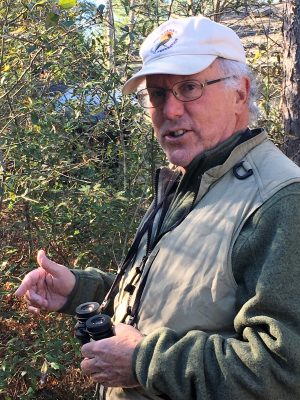
And thus began a lifelong quest and eventually a plethora of birding-related jobs, including working as a consultant for various agencies, and writing and publishing, in 1994, a book, “A Birder’s Guide to Coastal Carolina,” which, despite the passage of more than two decades, remains the bible of birders in these parts.
It was the first guide to the prime bird-watching spots of the Tar Heel coast, and it still gets read. Written for casual and serious birders, it’s held up well. There are new roads, of course, and less habitat, and maybe fewer places to go, but the birds haven’t changed that much. Fussell is proud of it, and says he doesn’t have plans to do an update. He’s plenty busy, thank you, doing what he loves.
He was hooked early on our “fine feathered friends.”
In the third grade, he says, “the kids in the class had to pick a project – birds butterflies or rocks or something – and I picked birds.”
Supporter Spotlight
Then, in the fourth grade, he got a pair of pretty high-powered binoculars, and his fascination grew. In the seventh grade, he got to go on a birding expedition to Ocracoke through a contact his mother, a teacher, had in the North Carolina Wildlife Resources Commission. It was probably the turning point; a birder was born, for sure.
In those days, the insecticide DDT had decimated the pelican population, and Ocracoke Inlet was one of the only places in the state you could see them. It rained for three days, and the “party” was pretty much holed up inside.
“But it was still great,” Fussell recalls. “I got to hang around with birders.”
One man on the trip was Harry Davis, director, at the time, of the North Carolina Museum of Natural History. Davis was born in Buxton on the Outer Banks, but moved with his family to the mainland and graduated from Beaufort High School before going to UNC-Chapel Hill. Davis, Fussell recalls, “gave me a year’s subscription to the Carolina Bird Club magazine.”
The first issue contained an article on the annual Christmas Bird Count. Fussell, inspired, started a Carteret County Christmas Bird Count that year.
“I think there had been one before, maybe 1959, but I guess the one we (he and a couple of others) started that year was the beginning of the ‘modern’ count in the county,” Fussell says. “We’ve only missed a couple of years, because of weather, since then.”
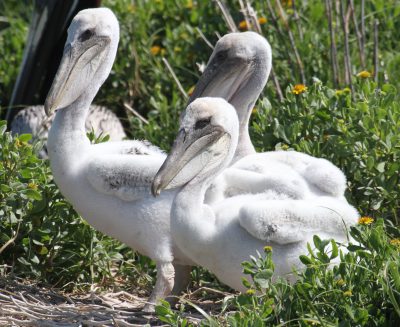
Fussell’s birding zeal tapered off a bit in high school in Morehead City; it was a victim of competition for his time. He was a bit of a runner and an avid surfer. Good surfing time was also good birding time. He still indulged his interest some, though, and when he went off to college at North Carolina State University, he majored in zoology. There were, of course, avid birders in that department, competitive ones who kept life lists of the birds they’d seen. Inevitably, Fussell’s bird bug came back with a vengeance, and it’s never been cured. He’s now seen 435 species in North Carolina; as of 2011, 473 species were believed to regularly appear in the state.
Professional Birder
Almost every day, Fussell’s out in the woods or fields or along the shore, looking or listening for birds, either for work or for pleasure. He’s worked as a consultant for many federal and state agencies and some private firms, and for the military, principally in the wilds of the sprawling Camp Lejeune Marine Corps Base in Onslow County. Yes, there are lots of “wilds” within the boundaries of the base, and yes, the Marine Corps does care about them, and the creatures in them. They don’t want to blow them up, especially if they’re federally protected, like the red-cockaded woodpecker.
He’s also worked at Bogue Field, near Cape Carteret, in the town of Bogue. It’s an auxiliary landing strip for the nearby Marine Corps Air Station Cherry Point. And he’s been a consultant for the North Carolina Sierra Club during recent planning for the Havelock bypass of U.S. 70, the main road from Raleigh, through eastern North Carolina, to the coast at Morehead City. There’s lots of forest and bird habitat there.
He spends a lot of time in the Croatan National Forest, which he loves and knows like relatively few others do.
“I’ve been very fortunate,” Fussell says. “I’ve really only worked one job with ‘regular’ hours, and that was for a short time, 1976-78, when I was a historian/naturalist at Fort Macon State Park” in Atlantic Beach, right across Bogue Sound from his home on the fringe of the “Promise Land,” a neighborhood along and near the Morehead City waterfront.
He’s seen some amazing, rare things, even spotted some things few if any have seen in the area or state before.
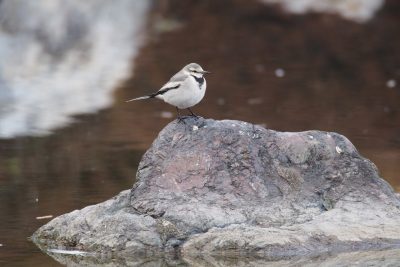
For example, he spotted a black-backed wagtail at the Cedar Island Ferry Terminal on May 15, 1982.
“It breeds in Siberia and Alaska and winters in Vietnam,” he said. “It wasn’t supposed to be here.” Apparently, the bird messed up on its migration pattern.
He and others also saw a kind of swift, much bigger than a common chimney swift – which was supposed to be on the West Coast – at the Outer Banks. Alas, swifts are among the fastest of birds. “That might top the wagtail,” Fussell says. “It might be the most unusual (bird) I’ve seen in North Carolina, and as it went by, I remember thinking ‘Damn it,’ because I didn’t get a photo, so we’ll never know for sure what it was.”
Over the years, he’s seen great changes in the bird habitat in Carteret and the surrounding area; when he was a boy, Fussell recalls, there was almost nothing but maritime forest west of Atlantic Beach on 26-mile-long Bogue Banks, the barrier island that was then connected to the mainland only by a drawbridge from Atlantic Beach to Morehead City, which was much, much smaller than it is now. There were long stretches of undeveloped land between Morehead City and Newport to the west; there’s much less now.
Those maritime forests on Bogue Banks have been lost to development almost everywhere, with the best remaining stands in Pine Knoll Shores, particularly around the North Carolina Aquarium, and in a few spots, such as Emerald Isle Woods Park, in Emerald Isle.
The Croatan, which was established in 1936 and covers the covers 159,885 acres bordered on three sides by the Neuse River, Bogue Sound and the White Oak River, has become increasingly fragmented by roads and altered ecologically by increased developed on its fringes.
Fussell sees the birds and plants – he’s also a botanist – in the forests and fields and on the beaches as indicators of general ecological health, and of the changing climate and man’s continued march into wild places. For example, when Fussell was young, it was rare to see a white ibis on the North Carolina; it was mainly seen far to the south, along the Gulf Coast and in Florida. Now, “its common all year long on the central and southern coast of North Carolina.
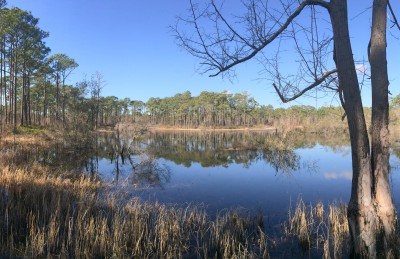
By contrast, black rails were once very numerous in Carteret, particularly in the Down East area northeast of Beaufort, but Fussell says their numbers have dropped dramatically in the past 10 years.
Rails nest on the ground in high, dry areas of marshes; as sea level has risen, many believe, there are fewer and fewer of those high, dry places, thus fewer rails.
The same is true of the endangered piping plover.
“There was a very high number of plovers back in the ’70s and ’80s near Beaufort Inlet, comparable to the numbers you saw farther south,” Fussell says. “I’d say it’s down from 100 or so (nesting pairs) to six, maybe as many as nine.”
The piping plover breeds on coastal beaches, and high tides, on top of water levels that have risen in many areas, can inundate nests. But the plovers’ numbers also are harmed simply by man’s continued spread into once-wild and largely uninhabited areas. Human disturbance curtails breeding success, and foot and car traffic crushes the nests and the young. Dogs – brought by humans – are predators – as are foxes and raccoons, which are drawn by the food humans throw away. Feral cats, which many humans feed, are also a big problem.
All this troubles Fussell.
“The more diversity you have – birds and plants – the more stable the environment is, the better for mankind, too,” he says. “If things are out of kilter, if this diversity is gone, are we really ourselves anymore? But we like what we like, and we protect what we like. Some people like horses, or feral cats, so that’s what they want to protect.”
Birders like birds, so they want to protect birds and habitat. Others, however, often don’t care as much about birds and habitat as they do about the things that threaten them and displace them: stores and houses and roads, to name a few.
“That’s what it boils down to,” Fussell said. In other words, it’s all about choices.
Still, Fussell says he isn’t totally pessimistic about birds or natural habitat, particularly in the area where he lives.
“There’s a fair amount of public, protected land,” he says, including the Croatan, Cape Lookout National Seashore,the Rachel Carson Estuarine Reserve and the North Carolina Coastal Federation’s North River Wetlands Preserve. The federation, through grants, has transformed the former North River Farms farmland back to its natural state, primarily to enhance and protect water quality, and Fussell often takes tours there to see the flora and fauna.
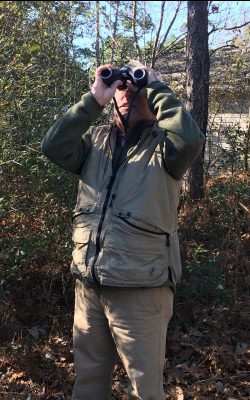
Of those, he’s probably most worried about the Croatan, which he says has been “nickled-and-dimed” in recent years. Even development near the forest, not in it, causes problems.
“When you get homes and businesses near the edge of the forest, it makes it harder to do (controlled) burns, which are crucial for the forest’s health and for habitat,” Fussell says. “The eastern segment of the Croatan is already pretty fragmented.”
Fussell believes it’s very important for nonprofits, such as the federation and the North Carolina Coastal Land Trust – both of which he praised – to continue to take advantage, when possible, of any opportunity to obtain and protect significant valuable habitat, to preserve water quality and wildlife, including birds. He’s on the board of director of the land trust.
The future, Fussell says, depends in part upon the level of our desire to protect diversity in the environment. He does his part, encouraging conservation and counting birds and trying to create awareness of problems. He spends a lot of time watching, and listening, out in nature.
There are some birds, he says, that you almost never see, but you know they are there because you hear their distinctive calls. If you’re around birds enough, you can do that. In well over half a century of birding, you can be assured Fussell knows what he hears, likes it, and will do what he can to help preserve it.








